Rasagiline mesylate

Rasagiline mesylate structure
|
Common Name | Rasagiline mesylate | ||
|---|---|---|---|---|
| CAS Number | 161735-79-1 | Molecular Weight | 267.344 | |
| Density | 1.05 g/cm3 | Boiling Point | 305.5ºC at 760 mmHg | |
| Molecular Formula | C13H17NO3S | Melting Point | 155-158°C | |
| MSDS | Chinese USA | Flash Point | 146.8ºC | |
| Symbol |

GHS07 |
Signal Word | Warning | |
Use of Rasagiline mesylateRasagiline Mesylate is a new MAO-B inhibitor for the treatment of idiopathic Parkinson's disease. Target: Monoamine Oxidase (MAO)-BRasagiline (N-propargyl-1-(R)-aminoindan) is a novel, highly potent irreversible monoamine oxidase (MAO)-B inhibitor, anti-Parkinsonian drug. Rasagiline is effective as monotherapy or adjunct to L-Dopa for patients with early and late Parkinson's disease (PD) [1]. Rasagiline inhibits MAO-B more potently than selegiline and has the advantage of once-daily dosing. In several large, randomized, placebo-controlled trials, rasagiline has demonstrated efficacy as monotherapy in early PD and as adjunctive therapy in advanced PD. In addition, rasagiline has been shown to have neuroprotective effects in in vitro and in vivo studies. The recently completed delayed-start ADAGIO (Attenuation of Disease Progression with Azilect Given Once-daily) trial suggests a potential disease-modifying effect for rasagiline 1 mg/day, though the clinical import of this finding has yet to be established [2]. Rasagiline has been found to be well tolerated and effective in the treatment of early PD and as adjunctive treatment in motor fluctuations. Whether rasagiline is associated with clinically significant neuroprotection (ie, disease modification) in PD is the subject of ongoing clinical trials [3]. |
| Name | Rasagiline Mesylate |
|---|---|
| Synonym | More Synonyms |
| Description | Rasagiline Mesylate is a new MAO-B inhibitor for the treatment of idiopathic Parkinson's disease. Target: Monoamine Oxidase (MAO)-BRasagiline (N-propargyl-1-(R)-aminoindan) is a novel, highly potent irreversible monoamine oxidase (MAO)-B inhibitor, anti-Parkinsonian drug. Rasagiline is effective as monotherapy or adjunct to L-Dopa for patients with early and late Parkinson's disease (PD) [1]. Rasagiline inhibits MAO-B more potently than selegiline and has the advantage of once-daily dosing. In several large, randomized, placebo-controlled trials, rasagiline has demonstrated efficacy as monotherapy in early PD and as adjunctive therapy in advanced PD. In addition, rasagiline has been shown to have neuroprotective effects in in vitro and in vivo studies. The recently completed delayed-start ADAGIO (Attenuation of Disease Progression with Azilect Given Once-daily) trial suggests a potential disease-modifying effect for rasagiline 1 mg/day, though the clinical import of this finding has yet to be established [2]. Rasagiline has been found to be well tolerated and effective in the treatment of early PD and as adjunctive treatment in motor fluctuations. Whether rasagiline is associated with clinically significant neuroprotection (ie, disease modification) in PD is the subject of ongoing clinical trials [3]. |
|---|---|
| Related Catalog | |
| References |
| Density | 1.05 g/cm3 |
|---|---|
| Boiling Point | 305.5ºC at 760 mmHg |
| Melting Point | 155-158°C |
| Molecular Formula | C13H17NO3S |
| Molecular Weight | 267.344 |
| Flash Point | 146.8ºC |
| Exact Mass | 267.092926 |
| PSA | 74.78000 |
| LogP | 2.87240 |
| Vapour Pressure | 0.000816mmHg at 25°C |
| Storage condition | -20°C Freezer |
|
Section1. IDENTIFICATION OF THE SUBSTANCE/MIXTURE Product identifiers Product name: Rasagiline mesylate : SML0124 CAS-No.: 161735-79-1 Section2. HAZARDS IDENTIFICATION Classification of the substance or mixture Classification according to Regulation (EC) No 1272/2008 [EU-GHS/CLP] Acute toxicity, Oral (Category 4) Classification according to EU Directives 67/548/EEC or 1999/45/EC Harmful if swallowed. Label elements Labelling according Regulation (EC) No 1272/2008 [CLP] Pictogram Signal wordWarning Hazard statement(s) Harmful if swallowed. Precautionary statement(s) none Supplemental Hazardnone Statements According to European Directive 67/548/EEC as amended. Hazard symbol(s) R-phrase(s) R22Harmful if swallowed. S-phrase(s)none Other hazards - none Section3. COMPOSITION/INFORMATION ON INGREDIENTS Substances Synonyms: N-Propargyl-1(R)-aminoindan methanesulfonate (1R)-2,3-Dihydro-N-2-propynl-1H-inden-1-amine methanesulfonate Formula: C12H13N · CH4O3S Molecular Weight: 267,34 g/mol ComponentConcentration (1R)-2,3-Dihydro-N-2-propynl-1H-inden-1-amine methanesulfonate CAS-No.161735-79-1- Section4. FIRST AID MEASURES Description of first aid measures General advice Consult a physician. Show this safety data sheet to the doctor in attendance. If inhaled If breathed in, move person into fresh air. If not breathing, give artificial respiration. Consult a physician. In case of skin contact Wash off with soap and plenty of water. Consult a physician. In case of eye contact Flush eyes with water as a precaution. If swallowed Never give anything by mouth to an unconscious person. Rinse mouth with water. Consult a physician. Most important symptoms and effects, both acute and delayed To the best of our knowledge, the chemical, physical, and toxicological properties have not been thoroughly investigated. Indication of any immediate medical attention and special treatment needed no data available Section5. FIREFIGHTING MEASURES Extinguishing media Suitable extinguishing media Use water spray, alcohol-resistant foam, dry chemical or carbon dioxide. Special hazards arising from the substance or mixture Carbon oxides, nitrogen oxides (NOx), Sulphur oxides Advice for firefighters Wear self contained breathing apparatus for fire fighting if necessary. Further information no data available Section6. ACCIDENTAL RELEASE MEASURES Personal precautions, protective equipment and emergency procedures Use personal protective equipment. Avoid dust formation. Avoid breathing vapors, mist or gas. Ensure adequate ventilation. Avoid breathing dust. Environmental precautions Do not let product enter drains. Methods and materials for containment and cleaning up Pick up and arrange disposal without creating dust. Sweep up and shovel. Keep in suitable, closed containers for disposal. Reference to other sections For disposal see section 13. Section7. HANDLING AND STORAGE Precautions for safe handling Avoid contact with skin and eyes. Avoid formation of dust and aerosols. Provide appropriate exhaust ventilation at places where dust is formed. Conditions for safe storage, including any incompatibilities Store in cool place. Keep container tightly closed in a dry and well-ventilated place. Recommended storage temperature: 2 - 8 °C Store with desiccant. Specific end uses no data available Section8. EXPOSURE CONTROLS/PERSONAL PROTECTION Control parameters Components with workplace control parameters Exposure controls Appropriate engineering controls Handle in accordance with good industrial hygiene and safety practice. Wash hands before breaks and at the end of workday. Personal protective equipment Eye/face protection Safety glasses with side-shields conforming to EN166 Use equipment for eye protection tested and approved under appropriate government standards such as NIOSH (US) or EN 166(EU). Skin protection Handle with gloves. Gloves must be inspected prior to use. Use proper glove removal technique (without touching glove's outer surface) to avoid skin contact with this product. Dispose of contaminated gloves after use in accordance with applicable laws and good laboratory practices. Wash and dry hands. The selected protective gloves have to satisfy the specifications of EU Directive 89/686/EEC and the standard EN 374 derived from it. Body Protection Complete suit protecting against chemicals, The type of protective equipment must be selected according to the concentration and amount of the dangerous substance at the specific workplace. Respiratory protection For nuisance exposures use type P95 (US) or type P1 (EU EN 143) particle respirator.For higher level protection use type OV/AG/P99 (US) or type ABEK-P2 (EU EN 143) respirator cartridges. Use respirators and components tested and approved under appropriate government standards such as NIOSH (US) or CEN (EU). Section9. PHYSICAL AND CHEMICAL PROPERTIES Information on basic physical and chemical properties a) AppearanceForm: solid b) Odourno data available c) Odour Thresholdno data available d) pHno data available e) Melting point/freezingno data available point f) Initial boiling point and no data available boiling range g) Flash pointno data available h) Evaporation rateno data available i) Flammability (solid, gas) no data available j) Upper/lowerno data available flammability or explosive limits k) Vapour pressureno data available l) Vapour densityno data available m) Relative densityno data available n) Water solubilityno data available o) Partition coefficient: n- no data available octanol/water p) Autoignitionno data available temperature q) Decompositionno data available temperature r) Viscosityno data available s) Explosive propertiesno data available t) Oxidizing propertiesno data available Other safety information no data available Section10. STABILITY AND REACTIVITY Reactivity no data available Chemical stability no data available Possibility of hazardous reactions no data available Conditions to avoid no data available Incompatible materials Strong oxidizing agents Hazardous decomposition products Other decomposition products - no data available Section11. TOXICOLOGICAL INFORMATION Information on toxicological effects Acute toxicity no data available Skin corrosion/irritation no data available Serious eye damage/eye irritation no data available Respiratory or skin sensitization no data available Germ cell mutagenicity no data available Carcinogenicity IARC:No component of this product present at levels greater than or equal to 0.1% is identified as probable, possible or confirmed human carcinogen by IARC. Reproductive toxicity no data available Specific target organ toxicity - single exposure no data available Specific target organ toxicity - repeated exposure no data available Aspiration hazard no data available Potential health effects Inhalation May be harmful if inhaled. May cause respiratory tract irritation. IngestionHarmful if swallowed. SkinMay be harmful if absorbed through skin. May cause skin irritation. EyesMay cause eye irritation. Signs and Symptoms of Exposure To the best of our knowledge, the chemical, physical, and toxicological properties have not been thoroughly investigated. Additional Information RTECS: Not available Section12. ECOLOGICAL INFORMATION Toxicity no data available Persistence and degradability no data available Bioaccumulative potential no data available Mobility in soil no data available Results of PBT and vPvB assessment no data available Other adverse effects no data available Section13. DISPOSAL CONSIDERATIONS Waste treatment methods Product Offer surplus and non-recyclable solutions to a licensed disposal company. Dissolve or mix the material with a combustible solvent and burn in a chemical incinerator equipped with an afterburner and scrubber. Contaminated packaging Dispose of as unused product. Section14. TRANSPORT INFORMATION UN number ADR/RID: -IMDG: -IATA: - UN proper shipping name ADR/RID: Not dangerous goods IMDG: Not dangerous goods IATA:Not dangerous goods Transport hazard class(es) ADR/RID: -IMDG: -IATA: - Packaging group ADR/RID: -IMDG: -IATA: - Environmental hazards ADR/RID: noIMDG Marine pollutant: noIATA: no Special precautions for user no data available Section15. REGULATORY INFORMATION This safety datasheet complies with the requirements of Regulation (EC) No. 1907/2006. Safety, health and environmental regulations/legislation specific for the substance or mixture no data available Chemical Safety Assessment SECTION 16 - ADDITIONAL INFORMATION N/A |
| Symbol |

GHS07 |
|---|---|
| Signal Word | Warning |
| Hazard Statements | H302 |
| Hazard Codes | Xi |
| Risk Phrases | R36/37/38:Irritating to eyes, respiratory system and skin . |
| Safety Phrases | S26-S37/39 |
| RIDADR | NONH for all modes of transport |
| WGK Germany | 3 |
| HS Code | 2921499090 |
| Precursor 8 | |
|---|---|
| DownStream 1 | |
| HS Code | 2921499090 |
|---|---|
| Summary | 2921499090 other aromatic monoamines and their derivatives; salts thereof VAT:17.0% Tax rebate rate:9.0% Supervision conditions:none MFN tariff:6.5% General tariff:30.0% |
|
Rasagiline as an adjunct to levodopa in patients with Parkinson's disease and motor fluctuations (LARGO, Lasting effect in Adjunct therapy with Rasagiline Given Once daily, study): a randomised, double-blind, parallel-group trial.
Lancet 365(9463) , 947-54, (2005) Rasagiline mesylate is a novel drug for Parkinson's disease with selective, irreversible monoamine oxidase B (MAO-B) inhibitor activity, and is effective as monotherapy in early disease. This study in... |
|
|
Rasagiline mesylate, a new MAO-B inhibitor for the treatment of Parkinson's disease: a double-blind study as adjunctive therapy to levodopa.
Clin. Neuropharmacol. 23(6) , 324-30, (2000) Rasagiline mesylate (TVP-1012) is a potent, selective, non-reversible MAO-B inhibitor, without the tyramine-potentiating effect and with neuroprotective activities. The benefit of rasagiline as monoth... |
|
|
Increased survival of dopaminergic neurons by rasagiline, a monoamine oxidase B inhibitor.
Neuroreport 9(4) , 703-7, (1998) Both deprenyl and rasagiline (R(+)-N-propargyl-1-aminoindane mesylate), at a concentration of 1-10 microM, increased survival in vitro of rat E14 mesencephalic dopaminergic neurons that had been prime... |
| acide méthanesulfonique - (1R)-N-prop-2-yn-1-yl-2,3-dihydro-1H-indén-1-amine (1:1) |
| Methansulfonsäure--(1R)-N-prop-2-in-1-yl-2,3-dihydro-1H-inden-1-amin(1:1) |
| methanesulfonic acid,(1R)-N-prop-2-ynyl-2,3-dihydro-1H-inden-1-amine |
| (1R)-N-(Prop-2-yn-1-yl)indan-1-amine methanesulfonate (1:1) |
| (1R)-N-(2-Propyn-1-yl)-1-indanamine methanesulfonate (1:1) |
| (1R)-N-prop-2-yn-1-yl-2,3-dihydro-1H-inden-1-amine methanesulfonate |
| Rasagiline mesylate |
| (R)-N-(Prop-2-yn-1-yl)-2,3-dihydro-1H-inden-1-amine methanesulfonate |
| (1R)-N-(prop-2-yn-1-yl)-2,3-dihydro-1H-inden-1-amine methanesulfonate (1:1) |
| 1H-Inden-1-amine, 2,3-dihydro-N-2-propyn-1-yl-, (1R)-, methanesulfonate (1:1) |
| 1H-inden-1-amine, 2,3-dihydro-N-2-propynyl-, (1R)-, methanesulfonate (1:1) |
| Rasagiline (mesylate) |
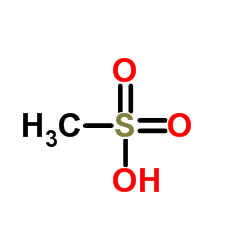 CAS#:75-75-2
CAS#:75-75-2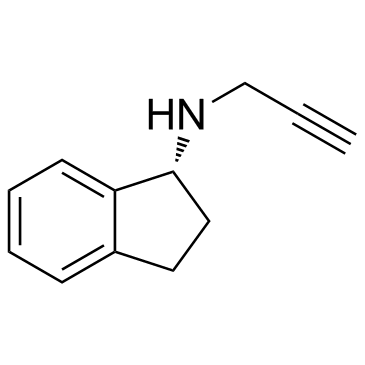 CAS#:136236-51-6
CAS#:136236-51-6 CAS#:694436-33-4
CAS#:694436-33-4 CAS#:83-33-0
CAS#:83-33-0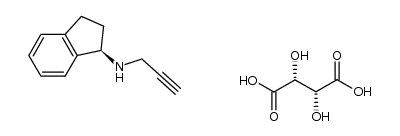 CAS#:1201685-18-8
CAS#:1201685-18-8 CAS#:68253-35-0
CAS#:68253-35-0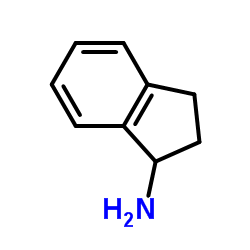 CAS#:34698-41-4
CAS#:34698-41-4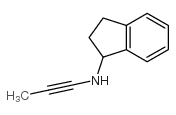 CAS#:1875-50-9
CAS#:1875-50-9
